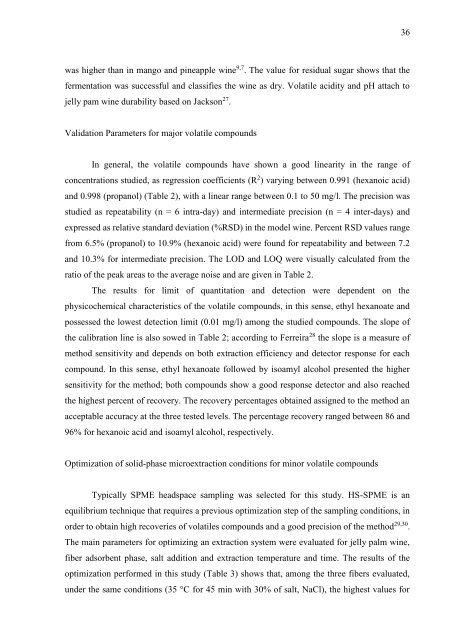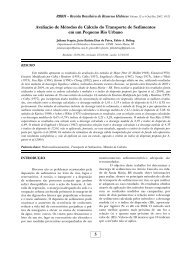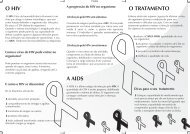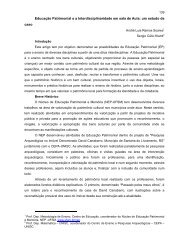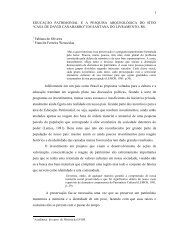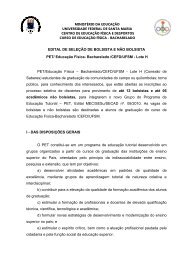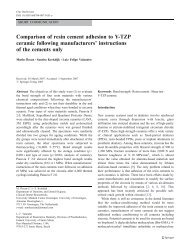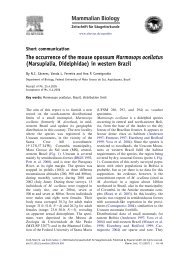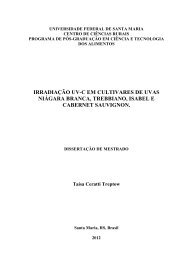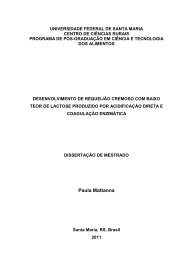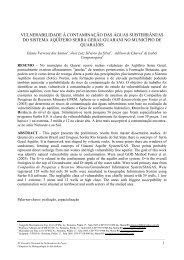DESENVOLVIMENTO E CARACTERIZAÇÃO FÃSICO ... - UFSM
DESENVOLVIMENTO E CARACTERIZAÇÃO FÃSICO ... - UFSM
DESENVOLVIMENTO E CARACTERIZAÇÃO FÃSICO ... - UFSM
You also want an ePaper? Increase the reach of your titles
YUMPU automatically turns print PDFs into web optimized ePapers that Google loves.
36<br />
was higher than in mango and pineapple wine 9,7 . The value for residual sugar shows that the<br />
fermentation was successful and classifies the wine as dry. Volatile acidity and pH attach to<br />
jelly pam wine durability based on Jackson 27 .<br />
Validation Parameters for major volatile compounds<br />
In general, the volatile compounds have shown a good linearity in the range of<br />
concentrations studied, as regression coefficients (R 2 ) varying between 0.991 (hexanoic acid)<br />
and 0.998 (propanol) (Table 2), with a linear range between 0.1 to 50 mg/l. The precision was<br />
studied as repeatability (n = 6 intra-day) and intermediate precision (n = 4 inter-days) and<br />
expressed as relative standard deviation (%RSD) in the model wine. Percent RSD values range<br />
from 6.5% (propanol) to 10.9% (hexanoic acid) were found for repeatability and between 7.2<br />
and 10.3% for intermediate precision. The LOD and LOQ were visually calculated from the<br />
ratio of the peak areas to the average noise and are given in Table 2.<br />
The results for limit of quantitation and detection were dependent on the<br />
physicochemical characteristics of the volatile compounds, in this sense, ethyl hexanoate and<br />
possessed the lowest detection limit (0.01 mg/l) among the studied compounds. The slope of<br />
the calibration line is also sowed in Table 2; according to Ferreira 28 the slope is a measure of<br />
method sensitivity and depends on both extraction efficiency and detector response for each<br />
compound. In this sense, ethyl hexanoate followed by isoamyl alcohol presented the higher<br />
sensitivity for the method; both compounds show a good response detector and also reached<br />
the highest percent of recovery. The recovery percentages obtained assigned to the method an<br />
acceptable accuracy at the three tested levels. The percentage recovery ranged between 86 and<br />
96% for hexanoic acid and isoamyl alcohol, respectively.<br />
Optimization of solid-phase microextraction conditions for minor volatile compounds<br />
Typically SPME headspace sampling was selected for this study. HS-SPME is an<br />
equilibrium technique that requires a previous optimization step of the sampling conditions, in<br />
order to obtain high recoveries of volatiles compounds and a good precision of the method 29,30 .<br />
The main parameters for optimizing an extraction system were evaluated for jelly palm wine,<br />
fiber adsorbent phase, salt addition and extraction temperature and time. The results of the<br />
optimization performed in this study (Table 3) shows that, among the three fibers evaluated,<br />
under the same conditions (35 °C for 45 min with 30% of salt, NaCl), the highest values for


